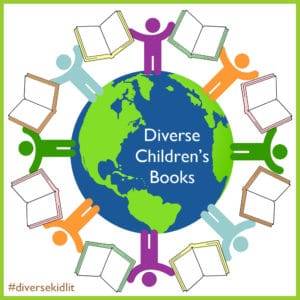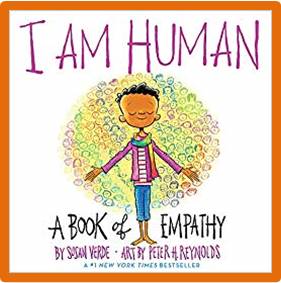
November … thoughts of Thanksgiving, family and festive gatherings come to mind. I can think of no better way to mark this important time than by focusing on having empathy and being kind, inclusive and responsible for our own choices. In her book I Am Human, Susan Verde reminds readers that it is important to be kind, not only to others but also to oneself. I appreciate this focus. I believe it helps kids to accept themselves, to recognize that they are always in the process of learning, trying, failing and trying again. No one starts out as an expert; increased competency and skills result from trial and error. And practice!
Having the courage to try and then to keep trying even in the face of difficulty, is essential. When we hold empathy toward ourselves, it helps open the door to having empathy toward others. Once children recognize that they need not hold themselves to standards of perfection, it is a logical step to hold this same understanding toward others. They begin to see that all people are faced with the same life journey of learning through practice. All of us want encouragement from self and others, not ridicule, kindness not criticism. We need empathy and tolerance in our world now more than ever.
Peter Reynolds masterful illustrations make the perfect context for this upbeat book about our essential humanity. It highlights both our commonality and our diversity
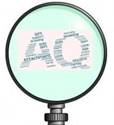 AQ Lens: Adopted children frequently wrestle with feelings of insecurity and fear of rejection which frequently expresses itself as perfectionism. It is commonly thought that kids unconsciously choose this strategy as a way to ensure their adoptive families won’t have a reason to reject them as their birth families did. (As adults, we know that adoption is not “caused” by a child; it results from very complicated and serious issues that are no fault of the child.)
AQ Lens: Adopted children frequently wrestle with feelings of insecurity and fear of rejection which frequently expresses itself as perfectionism. It is commonly thought that kids unconsciously choose this strategy as a way to ensure their adoptive families won’t have a reason to reject them as their birth families did. (As adults, we know that adoption is not “caused” by a child; it results from very complicated and serious issues that are no fault of the child.)
This book helps to open conversations about kindness–especially kindness towards self– and can lead to important sharing of intimate vulnerabilities with which a child wrestles. Focus first on how “some children” might feel or think. Be open to sharing some of your own fears and how you nurture empathy for self and others. Ask open questions like, “I wonder if you think about …? Or, “I wonder if you worry…” Or, “I wonder if you are angry with yourself, or your birth mother or …”
Do not press the point. Focus instead on creating a security within their hearts and minds that you are willing and able to hear whatever your child thinks and feels about himself, adoption, family, community, etc.
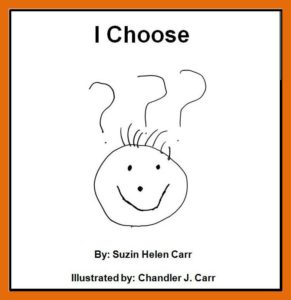 I have reviewed I Choose by Suzin Helen Carr previously. This little gem is an award-winning indie-published book yet many may not have heard of it. Written by Suzin Helen Carr and illustrated by her then seven-year-old son, the book visits various moments when a child–or adult–is called upon to make a choice. For example, what to wear, how to feel, what to see, do, eat or play. The darling illustrations bring the ideas to life in a way that will appeal to kids. I think it will increase their ability to notice and appreciate the many “choosing” opportunities that occur in their day.
I have reviewed I Choose by Suzin Helen Carr previously. This little gem is an award-winning indie-published book yet many may not have heard of it. Written by Suzin Helen Carr and illustrated by her then seven-year-old son, the book visits various moments when a child–or adult–is called upon to make a choice. For example, what to wear, how to feel, what to see, do, eat or play. The darling illustrations bring the ideas to life in a way that will appeal to kids. I think it will increase their ability to notice and appreciate the many “choosing” opportunities that occur in their day.
The message of “I Choose,” will certainly resonate with adults who share the book with their child. Suzin has also written a version of “I Choose too” an adult version of this illuminating book. Readers can breeze through this short gem of a book very quickly. Better yet, pause and explore each page. This book can trigger many possible and significant conversations with your child. You just might be surprised by what you discover about one another.
It is essential to teach children–and to remind ourselves–that we have the power to choose and that we are responsible for the choices we make. Accountability and integrity are as important as empathy. All are essential for a society to function successfully.
Welcome to #DiverseKidLit ! Please join us in sharing your diverse children’s book links and resources, as well as visiting other links to find great suggestions and recommendations.
What Is #DiverseKidLit?
Diverse Children’s Books is a book-sharing meme designed to promote the reading and writing of children’s books that feature diverse characters. This community embraces all kinds of diversity including (and certainly not limited to) diverse, inclusive, multicultural, and global books for children of all backgrounds.
We encourage everyone who shares to support this blogging community by visiting and leaving comments for at least three others. Please also consider following the hosts on at least one of their social media outlets. Spread the word using #diversekidlit and/or adding our button to your site and your diverse posts.
We hope this community serves as a resource for parents, teachers, librarians, publishers, and authors! Our next linkup will be Saturday, December 1st and the first Saturday of each month.
#DiverseKidLit is Hosted by:
Want to be notified when the next #diversekidlit linkup goes live? Click here to join the mailing list. Interested in joining as a host or an occasional co-host? Contact Katie at thelogonauts.com.
(Never participated in a linkup before? Please click here for a more detailed step-by-step.)
Get #DiverseKidLit Recommendations on Pinterest!
Our Pinterest board highlights a wide range of amazing posts and resources for Diverse Children’s Books. Please consider following the board for even more great books!
Share Your Link 

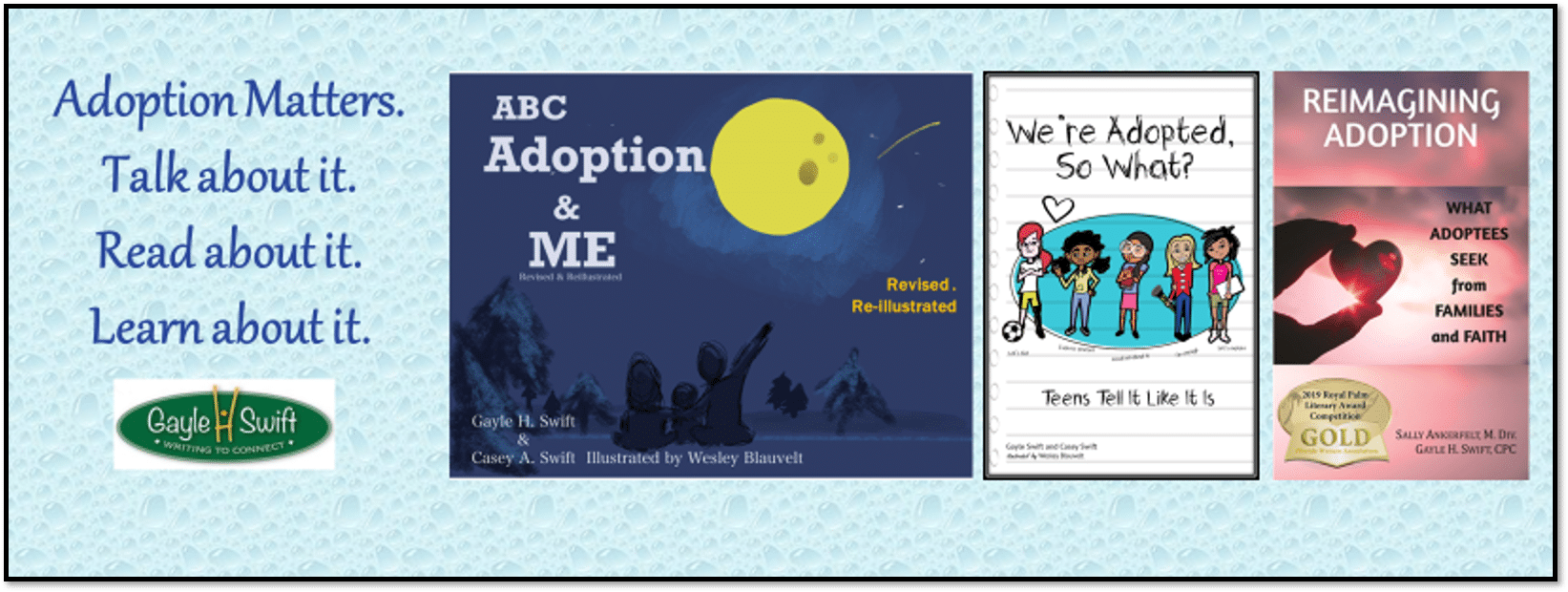


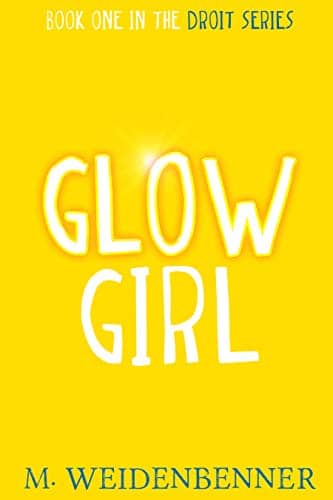



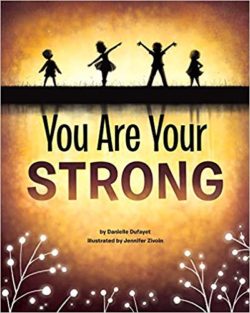 Emotions reflect the gamut of human experience. They include a spectrum from frigid despair, to scalding anger, immobilizing fear, to unbridled joy. Every emotion has value, serves a purpose, and bears expressing. Sometimes emotions can disrupt or overwhelm. Regulating emotions takes skill even for adults. Children benefit from learning how to express and manage emotions in a safe and healthy way, how to name them, how to talk about them, and how to express them. This ability is an important element of Emotional Intelligence.
Emotions reflect the gamut of human experience. They include a spectrum from frigid despair, to scalding anger, immobilizing fear, to unbridled joy. Every emotion has value, serves a purpose, and bears expressing. Sometimes emotions can disrupt or overwhelm. Regulating emotions takes skill even for adults. Children benefit from learning how to express and manage emotions in a safe and healthy way, how to name them, how to talk about them, and how to express them. This ability is an important element of Emotional Intelligence. Adoption-Attunement Lens– Even if they are not involved in an open adoption, all adopted children have both a birth family and an adopted family. Research reveals that adopted children think about and fantasize about their birth parents. They wrestle with questions about what specifically caused them to be placed for adoption. Unsurprisingly, adoptees have strong, complicated emotions about this reality. Reading this book with a parent can logically segue into discussions about these feelings. Such conversations provide children with essential support and can help clear up any misconceptions that blame themselves for their adoption.
Adoption-Attunement Lens– Even if they are not involved in an open adoption, all adopted children have both a birth family and an adopted family. Research reveals that adopted children think about and fantasize about their birth parents. They wrestle with questions about what specifically caused them to be placed for adoption. Unsurprisingly, adoptees have strong, complicated emotions about this reality. Reading this book with a parent can logically segue into discussions about these feelings. Such conversations provide children with essential support and can help clear up any misconceptions that blame themselves for their adoption. 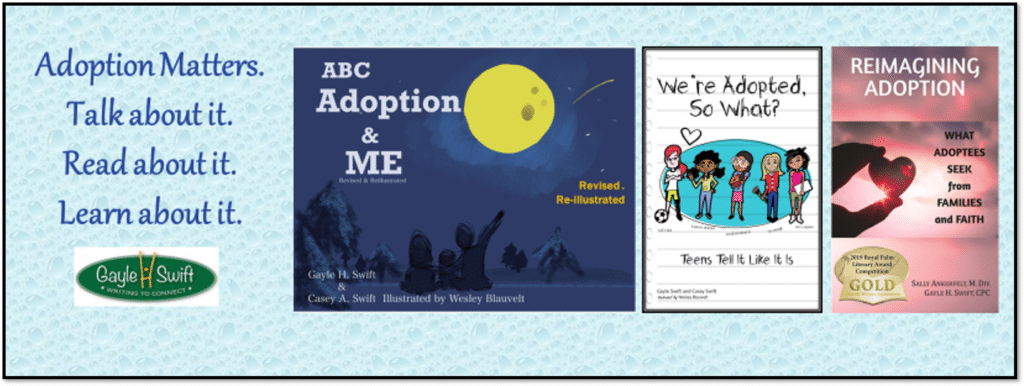




 AQ Lens: The inclusionary message of this story will connect with adoptees who lead lives based on the reality that adoption grafts them from one family into another. On some level, they will always reflect the characteristics of their DNA and they will also reflect the nurturing influence of their adoptive family. They become an embodiment of blending both. Their adoptive family will be enriched by the addition of their presence. The storyline offers an opportunity to talk about the emotions the various characters expressed–both the pleasure of being included plus the pain of feeling “othered” and the very real impact that tribal preferences impose. If the child seems open, parents can turn the discussion to the similarities in their child’s life.
AQ Lens: The inclusionary message of this story will connect with adoptees who lead lives based on the reality that adoption grafts them from one family into another. On some level, they will always reflect the characteristics of their DNA and they will also reflect the nurturing influence of their adoptive family. They become an embodiment of blending both. Their adoptive family will be enriched by the addition of their presence. The storyline offers an opportunity to talk about the emotions the various characters expressed–both the pleasure of being included plus the pain of feeling “othered” and the very real impact that tribal preferences impose. If the child seems open, parents can turn the discussion to the similarities in their child’s life.





